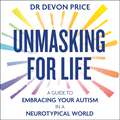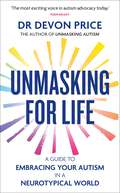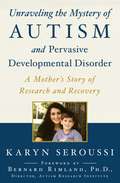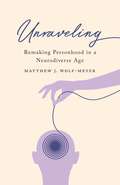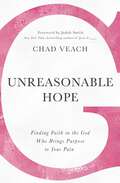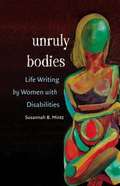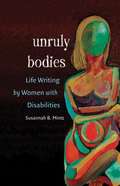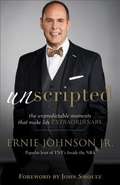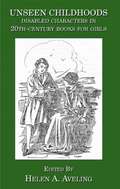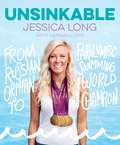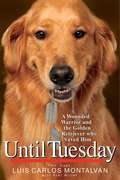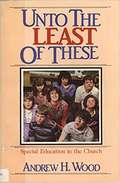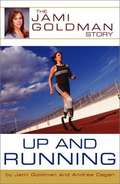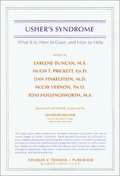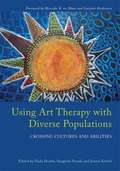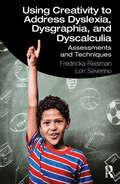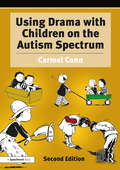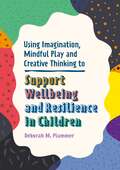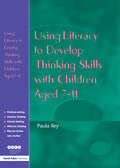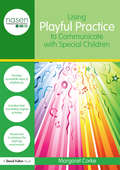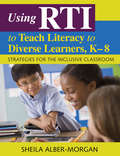- Table View
- List View
Unmasking for Life: A Guide to Embracing your Autism in a Neurotypical World
by Devon Price'Devon Price is the most exciting, revolutionary voice in autism advocacy today.'-Fern Brady, comedian and author of Strong Female Character'Deeply insightful and empowering, illuminating a path for those of us searching for authentic connections and relationships [...] This is the book I desperately needed.' -Emily Katy, author of Girl Unmasked***Live your best, unashamedly unmasked Autistic life with this invaluable resource featuring tools for navigating friendships, family, work, love, and life, from the author of Unmasking Autism.So you've discovered what 'masking' is, how you're doing it, and the potential of embracing your neurodiversity. Now what?Most masked Autistics have spent a lifetime being told how to perform neurotypically: how to behave, how to carry themselves, what to feel, and how to live. With his previous book, Unmasking Autism, Dr. Devon Price has given them the space and confidence to unmask and embrace their neurodiversity. But no matter where you are in the unmasking process, there is still work to be done. Because Autistic people often fear change, struggle to process unfamiliar situations, and have trauma histories that have conditioned them to avoid conflict, they don't always know how to transform their inner revelations into outer realities. They need more than internal healing - they need practical tools to translate acceptance into assertiveness and interpersonal effectiveness.In this book, Devon Price helps you advocate for your needs and invent new ways of living, loving and being that work for you, using five key skills:· Acceptance of change, loss, and uncertainty· Engagement in productive conflict, discussion, and disagreement· Transgression of unfair rules, demands, and social expectations· Tolerance of distress, disagreement, or being disliked· Creation of new accommodations, relationship structures, and new ways of livingWith powerful insights and transformative resources, Unmasking for Life is a practical guide to living a fully realised Autistic life.***PRAISE FOR UNMASKING AUTISM:'Outstanding.'' -Fern Brady, author of Strong Female Character'Reading this felt like being at home - I didn't realise how much I masked. What an incredible book that I know will be re-read many times over.' -Dr Camilla Pang, author of Explaining Humans'A powerful argument for radical self-acceptance applicable to all readers.' - Los Angeles Times
Unmasking for Life: A Guide to Embracing your Autism in a Neurotypical World
by Devon Price'Devon Price is the most exciting, revolutionary voice in autism advocacy today.'-Fern Brady, comedian and author of Strong Female Character'Deeply insightful and empowering, illuminating a path for those of us searching for authentic connections and relationships [...] This is the book I desperately needed.' -Emily Katy, author of Girl Unmasked***Live your best, unashamedly unmasked Autistic life with this invaluable resource featuring tools for navigating friendships, family, work, love, and life, from the author of Unmasking Autism.So you've discovered what 'masking' is, how you're doing it, and the potential of embracing your neurodiversity. Now what?Most masked Autistics have spent a lifetime being told how to perform neurotypically: how to behave, how to carry themselves, what to feel, and how to live. With his previous book, Unmasking Autism, Dr. Devon Price has given them the space and confidence to unmask and embrace their neurodiversity. But no matter where you are in the unmasking process, there is still work to be done. Because Autistic people often fear change, struggle to process unfamiliar situations, and have trauma histories that have conditioned them to avoid conflict, they don't always know how to transform their inner revelations into outer realities. They need more than internal healing - they need practical tools to translate acceptance into assertiveness and interpersonal effectiveness.In this book, Devon Price helps you advocate for your needs and invent new ways of living, loving and being that work for you, using five key skills:· Acceptance of change, loss, and uncertainty· Engagement in productive conflict, discussion, and disagreement· Transgression of unfair rules, demands, and social expectations· Tolerance of distress, disagreement, or being disliked· Creation of new accommodations, relationship structures, and new ways of livingWith powerful insights and transformative resources, Unmasking for Life is a practical guide to living a fully realised Autistic life.***PRAISE FOR UNMASKING AUTISM:'Outstanding.'' -Fern Brady, author of Strong Female Character'Reading this felt like being at home - I didn't realise how much I masked. What an incredible book that I know will be re-read many times over.' -Dr Camilla Pang, author of Explaining Humans'A powerful argument for radical self-acceptance applicable to all readers.' - Los Angeles Times
Unmasking for Life: The Autistic Person's Guide to Connecting, Loving, and Living Authentically
by Devon Price PhDLive your best, unashamedly unmasked Autistic life with this invaluable resource featuring tools for navigating friendships, family, work, and love, from the author of Unmasking Autism.&“Unmasking for Life should be read by not only autistic people but their loved ones, to ensure they facilitate a truly fulfilling life.&”—Eric Garcia, author of We&’re Not Broken: Changing the Autism ConversationMost masked Autistics have spent a lifetime being told how to perform neurotypically: how to behave, how to carry themselves, what to feel, and how to live. With his previous book, Unmasking Autism, Devon Price, PhD, has given them the space and the tools to unmask and embrace their neurodiversity. But no matter where you are in the unmasking process, there is still work to be done. Unmasking is more than just a personal process of self-acceptance, after all—it also requires figuring out how to move comfortably throughout life building friendships, nurturing family, pursuing love, finding a means of survival, and expressing oneself on one&’s own terms. In order to live a brilliantly unashamed Autistic life, you need more than internal healing—you need practical tools of assertiveness and interpersonal effectiveness, and solutions to the problems of ableism and inaccessibility. Enter Unmasking for Life, which provides the resources to help you advocate for your needs and invent new ways of living, loving, and being that work with your disability rather than against it. You&’ll learn how to develop five key skills for living unmasked in all areas of life:• Acceptance of change, loss, and uncertainty• Engagement in productive conflict, discussion, and disagreement• Transgression of unfair rules, demands, and social expectations• Tolerance of distress, disagreement, or being disliked• Creation of new accommodations, relationship structures, and new ways of livingUnmasking for Life will help validate and support you so you can move beyond unmasking your Autism and begin unmasking your world.
Unraveling the Mystery of Autism and Pervasive Developmental Disorder
by Karyn SeroussiWhen their nineteen-month-old son, Miles, was diagnosed with autism, Karyn Seroussi, a writer, and her husband, a scientist, fought back with the only weapons at their disposal: love and research. Consulting medical papers, surfing the Web, and networking with other parents, they traced the onset of their child's problems to an immune system breakdown that coincided with his vaccinations. As a result, his digestive system was unable to break down certain proteins, which in turn led to abnormal brain development. So Karyn and her husband got to work -- Karyn implementing their program at home while her husband tested his theories at the scientific lab where he worked. Unraveling the Mystery of Autism and Pervasive Developmental Disorder is an inspiring and suspenseful chronicle of how one couple empowered themselves to challenge the medical establishment that promised no hope -- and found a cure for their child. Here are the explanations and treatments they so carefully researched and discovered, a wealth of crucial tools and hands-on information that can help other parents reverse the effects of autism and PDD, including step-by-step instructions for the removal of dairy and gluten from the diet, special recipes, and an explanation of the roles of the key players in autism research.
Unraveling: Remaking Personhood in a Neurodiverse Age
by Matthew J. Wolf-MeyerDeveloping a cybernetic model of subjectivity and personhood that honors disability experiences to reconceptualize the category of the human Twentieth-century neuroscience fixed the brain as the basis of consciousness, the self, identity, individuality, even life itself, obscuring the fundamental relationships between bodies and the worlds that they inhabit. In Unraveling, Matthew J. Wolf-Meyer draws on narratives of family and individual experiences with neurological disorders, paired with texts by neuroscientists and psychiatrists, to decenter the brain and expose the ableist biases in the dominant thinking about personhood. Unraveling articulates a novel cybernetic theory of subjectivity in which the nervous system is connected to the world it inhabits rather than being walled off inside the body, moving beyond neuroscientific, symbolic, and materialist approaches to the self to focus instead on such concepts as animation, modularity, and facilitation. It does so through close readings of memoirs by individuals who lost their hearing or developed trauma-induced aphasia, as well as family members of people diagnosed as autistic—texts that rethink modes of subjectivity through experiences with communication, caregiving, and the demands of everyday life. Arguing for a radical antinormative bioethics, Unraveling shifts the discourse on neurological disorders from such value-laden concepts as &“quality of life&” to develop an inclusive model of personhood that honors disability experiences and reconceptualizes the category of the human in all of its social, technological, and environmental contexts.
Unreasonable Hope: Finding Faith in the God Who Brings Purpose to Your Pain
by Judah Smith Chad Veach"Where was God when ____? How could God allow ____? Why?" These are the questions that flood our hearts and minds when the unimaginable happens. When things go horribly wrong and the world seems to be unraveling, how do you believe in God's goodness? How do you cling to hope? Chad Veach directs readers away from clichéd Sunday school answers that fail to offer real comfort or provide faith-building insights. Instead, he draws from God's promises in the Bible and from the story of his own daughter's diagnosis of a devastating and debilitating disease to reveal simple, purposeful steps for dealing with pain. Resting in God's love, remembering his past faithfulness, and realizing the distinction between having faith and clinging to hope are just some of these steps. Veach reminds us that because we know who God is, we know there is hope.
Unruly Bodies
by Susannah B. MintzA collection of essays and narratives penned by women with disabilities themselves. It appeals to students interested in women's studies, disability studies and feminist autobiography studies.
Unruly Bodies
by Susannah B. MintzThe first critical study of personal narrative by women with disabilities, Unruly Bodies examines how contemporary writers use life writing to challenge cultural stereotypes about disability, gender, embodiment, and identity. Combining the analyses of disability and feminist theories, Susannah Mintz discusses the work of eight American autobiographers: Nancy Mairs, Lucy Grealy, Georgina Kleege, Connie Panzarino, Eli Clare, Anne Finger, Denise Sherer Jacobson, and May Sarton. Mintz shows that by refusing inspirational rhetoric or triumph-over-adversity narrative patterns, these authors insist on their disabilities as a core--but not diminishing--aspect of identity. They offer candid portrayals of shame and painful medical procedures, struggles for the right to work or to parent, the inventive joys of disabled sex, the support and the hostility of family, and the losses and rewards of aging. Mintz demonstrates how these unconventional stories challenge feminist idealizations of independence and self-control and expand the parameters of what counts as a life worthy of both narration and political activism. Unruly Bodies also suggests that atypical life stories can redefine the relation between embodiment and identity generally.
Unscripted: The Unpredictable Moments that Make Life Extraordinary
by John Smoltz Ernie JohnsonErnie Johnson Jr. has been in the game a long time. With one of the most recognized voices in sports broadcasting, he is a tireless perfectionist when it comes to preparing and delivering his commentary. Yet he knows that some of sports' greatest triumphs--and life's greatest rewards--come from those unscripted moments you never anticipated. In this heartfelt, gripping autobiography, the three-time Sports Emmy Award-winner and popular host of TNT's Inside the NBA provides a remarkably candid look at his life both on and off the screen. From his relationship with his sportscaster father to his own rise to the top of sports broadcasting, from battling cancer to raising six children with his wife, Cheryl, including a special needs child adopted from Romania, Ernie has taken the important lessons he learned from his father and passed them on to his own children. This is the untold story, the one Ernie has lived after the lights are turned off and the cameras stop rolling. Sports fans, cancer survivors, fathers and sons, adoptive parents, those whose lives have been touched by a person with special needs, anyone who loves stories about handling life's surprises with grace--Unscripted is for all of these.
Unseen Childhoods: Disabled Characters in 20th-Century Books for Girls
by Helen A. AvelingThe nine essays in this collection break the 20th century into three periods - early, middle, and late. They cover the themes of stereotypes, role models, and inclusion and segregation, tracing their evolution across nearly a hundred years. Among the essays are "Modeling Illness in the Early 20th Century" by Helen A. Aveling; "A Choice of Virtues," by Deborah Kent; and "My Sibling the Other," by Rebecca R. Butler.
Unsinkable: From Russian Orphan to Paralympic Swimming World Champion
by Jessica LongThe top Paralympic swimmer in the world, Jessica Long delivers an inspirational photographic memoir. Born in Siberia with fibular hemimelia, Jessica Long was adopted from a Russian orphanage at thirteen months old and has since become the second most decorated U.S. Paralympic athlete of all time. Now, Jessica shares all the moments in her life—big and small, heartbreaking and uplifting—that led to her domination in the Paralympic swimming world. This photographic memoir, filled with photographs, sidebars, quotes, and more, will thrill her fans and inspire those who are hearing her story for the first time.
Until Tuesday: A Wounded Warrior And The Golden Retriever Who Saved Him
by Bret Witter Luis Carlos Montalván“We aren’t just service dog and master; Tuesday and I are also best friends. Kindred souls. Brothers. Whatever you want to call it. We weren’t made for each other, but we turned out to be exactly what the other needed. ” A highly decorated captain in the U. S. Army, Luis Montalván never backed down from a challenge during his two tours of duty in Iraq. After returning home from combat, however, the pressures of his physical wounds, traumatic brain injury, and crippling post-traumatic stress disorder began to take their toll. Haunted by the war and in constant physical pain, he soon found himself unable to climb a simple flight of stairs or face a bus ride to the VA hospital. He drank; he argued; ultimately, he cut himself off from those he loved. Alienated and alone, unable to sleep or bend over without pain, he began to wonder if he would ever recover. Then Luis met Tuesday, a beautiful and sensitive golden retriever trained to assist the disabled. Tuesday had lived amongst prisoners and at a home for troubled boys, blessing many lives; he could turn on lights, open doors, and sense the onset of anxiety and flashbacks. But because of a unique training situation and sensitive nature, he found it difficult to trust in or connect with a human being--until Luis. Until Tuesday is the story of how two wounded warriors, who had given so much and suffered the consequences, found salvation in each other. It is a story about war and peace, injury and recovery, psychological wounds and spiritual restoration. But more than that, it is a story about the love between a man and dog, and how together they healed each other’s souls.
Until Tuesday: A Wounded Warrior and the Golden Retriever Who Saved Him
by Bret Witter Luis Carlos Montalván"We aren't just service dog and master; Tuesday and I are also best friends. Kindred souls. Brothers. Whatever you want to call it. We weren't made for each other, but we turned out to be exactly what the other needed." A highly decorated captain in the U. S. Army, Luis Montalván never backed down from a challenge during his two tours of duty in Iraq. After returning home from combat, however, the pressures of his physical wounds, traumatic brain injury, and crippling post-traumatic stress disorder began to take their toll. Haunted by the war and in constant physical pain, he soon found himself unable to climb a simple flight of stairs or face a bus ride to the VA hospital. He drank; he argued; ultimately, he cut himself off from those he loved. Alienated and alone, unable to sleep or bend over without pain, he began to wonder if he would ever recover. Then Luis met Tuesday, a beautiful and sensitive golden retriever trained to assist the disabled. Tuesday had lived amongst prisoners and at a home for troubled boys, blessing many lives; he could turn on lights, open doors, and sense the onset of anxiety and flashbacks. But because of a unique training situation and sensitive nature, he found it difficult to trust in or connect with a human being--until Luis. Until Tuesday is the story of how two wounded warriors, who had given so much and suffered the consequences, found salvation in each other. It is a story about war and peace, injury and recovery, psychological wounds and spiritual restoration. But more than that, it is a story about the love between a man and dog, and how together they healed each other's souls.
Unto the Least of These: Special Education in the Church
by Laverne Webber Ellen Glanville Andrew WoodDescribes how to develop a ministry for the mentally retarded. Includes teaching strategies, discipline information, and other useful information.
Up and Running: The Jami Goldman Story
by Andrea Cagan Jami GoldmanMeet tall, beautiful Jami Goldman: world-class athlete, Adidas spokesperson, motivational speaker -- and double amputee. More than a decade ago, a wrong turn on a back road during a blizzard resulted in a terrifying fight for her life. Now for the first time, Jami recounts her gripping story of being trapped in the snow for eleven endless days, the grievous loss of her legs, and the fortitude it has taken to not only walk again but run like the wind -- all the way to freedom. On December 23, 1987, nineteen-year-old Jami Goldman and her friend Lisa Barzano headed home from a ski trip in Purgatory, Colorado, never imagining they would end up in a freezing hell on a back road that the state of Arizona had closed without checking for travelers in distress. The girls' car battery died during that first long night, stranding them in below-zero temperatures. With only a cinnamon roll and a six-pack of frozen Diet Pepsi, the next ten days became an exercise in survival, testing their faith and courage even after they were rescued -- when Jami's legs and feet were deemed beyond saving. Wise, forthright, and astonishing, Up and Running follows Jami's global journey from loss to recovery. Her story, which often reads like a compelling mystery, features her supportive family and friends, a devastating court case, her passionate relationship with the man she married, and finally, her triumph over inconceivably fearful obstacles. In the end, Up and Running shows us all how to use adversity as a stepping-stone -- leading us to heights we previously considered out of reach and beyond our wildest dreams.
Upahar: उपहार
by Kusumlata Malikउपहार पुस्तक विकलांगता विमर्श पर आधारित कहानियों का एक संग्रह है, जिसका संपादन कुसुमलता मलिक ने किया है। यह संग्रह विकलांग व्यक्तियों के जीवन में आने वाली सामाजिक, आर्थिक और मानसिक चुनौतियों को संवेदनशीलता से उजागर करता है। पुस्तक में हिंदी साहित्य के प्रतिष्ठित लेखकों जैसे महादेवी वर्मा, प्रेमचंद, विष्णु प्रभाकर, और मन्नू भंडारी की कहानियाँ शामिल हैं। पुस्तक की कहानियाँ विकलांगता को न केवल एक शारीरिक अवस्था, बल्कि सामाजिक और मानसिक संघर्ष के रूप में भी पेश करती हैं। इनमें "गुंगिया" जैसी कहानियाँ सामाजिक उपेक्षा और संवेदनहीनता के बीच संवेदनशीलता को उजागर करती हैं, जबकि "अन्ना" और "अललटप्पू" जैसे लेख विकलांग बच्चों और उनके अभिभावकों की मनोदशा को दर्शाते हैं। पुस्तक का उद्देश्य समाज के पूर्वाग्रहों को चुनौती देना और विकलांग व्यक्तियों के प्रति अधिक समावेशी दृष्टिकोण विकसित करना है। यह संग्रह मानवीय संवेदनाओं की गहराई और साहित्यिक उत्कृष्टता का अनूठा मिश्रण है। उपहार सामाजिक समानता की भावना को बढ़ावा देने और संवेदनशील दृष्टिकोण को प्रोत्साहित करने का महत्वपूर्ण प्रयास है।
Urban Narratives: Portraits in Progress, Life at the Intersections of Learning Disability, Race, and Social Class
by David J. ConnorThis book focuses on the experiences of the author as a teacher in an urban public school special education programs, where students are labeled learning disabled (LD), Black or Latino(a), and working-class or poor.
Usher's Syndrome: What It Is, How to Cope, and How to Help
by Earlene Duncan Hugh T. Prickett Dan Finkelstein Mccay Vernon Toni HollingsworthDescribes what Usher's syndrome is, how it impacts a person's life, and ways to cope with this dual disability.
Using Art Therapy With Diverse Populations: Crossing Cultures and Abilities
by Paula Howie Sangeeta Prasad Jennie Kristel Mercedes B. Ter Maat Gaelynn P. Wolf BordonaroArt is a recognised and effective form of therapy that is used all over the world. Yet are the approaches used as universal as the successes? Written with an international focus, this book considers how culture impacts the practice of art therapy in a variety of settings. With contributions from experienced art therapists who have worked in diverse environments, this book attempts to understand and highlight the specific cultural, subcultural and ethnic factors that inform art therapy treatment. It addresses variable factors including setting, population, environment and ability, and how they influence art therapy approaches. It also considers how cultural differences can impact physical art making through choices of color, symbol and metaphor. Each chapter provides a framework showing how art therapy techniques have been used in order to successfully work with distinct populations. This book will provide practitioners with ideas for how to adapt art therapy training and approaches to suit the setting and meet the needs of a huge range of populations. Full of informative case studies, this book will be invaluable reading for art therapists and students of art therapy.
Using Creativity to Address Dyslexia, Dysgraphia, and Dyscalculia: Assessments and Techniques
by Fredricka Reisman Lori SeverinoDesigned to help educators recognize and nurture students with dyslexia, dysgraphia, and dyscalculia, this book guides readers through best practices for using creativity theory and strategies to address the learning challenges for students who have difficulty in acquiring literacy and mathematics content. Offering concrete examples of creativity assessment and pedagogical techniques, chapters are supported by rich appendices providing assessment and screening checklists, time telling objectives, learning trouble spots, a creative approach to teaching place value, and a handy cross-referencing table. Accessible and thorough, this up-to-date guide will help educators develop strategies that acknowledge students’ creative strengths to address learning challenges across the literacy and mathematics curricula.
Using Drama with Children on the Autism Spectrum: A Resource for Practitioners in Education and Health
by Carmel ConnThe second edition of Using Drama with Children on the Autism Spectrum takes the perspective that support for the learning and development of children should have the purpose of giving them the freedom to be more fully who they are and able to function more effectively as themselves in a wider range of contexts. The focus of this new edition is on learning outcomes as expressed by autistic people, for example, to develop better understandings about the social world and to know how to manage everyday situations more successfully. This practical resource book contains more than 150 activities for use with children aged 5–11 years old. Written for mainstream and special education teachers, speech and language therapists, drama teachers, play workers and creative arts therapists, the book shows how using drama with children across the autism spectrum can provide valuable experiences in being with others and communicating with them in enjoyable ways that support the development of well-being and confidence. In addition, drama is presented as a rich medium for reflecting on everyday social situations and developing children’s understandings about the social world. Complete with case studies, photocopiable resources and step-by-step guidance on how to facilitate drama activities that all children can enjoy, this practical resource will be invaluable for those who are looking for new ways of engaging children on the autism spectrum and their peers. The second edition of this practical resource has been extensively revised, updated and re-focused in line with current practice and thinking.
Using Imagination, Mindful Play and Creative Thinking to Support Wellbeing and Resilience in Children (Helping Children to Build Wellbeing and Resilience)
by Deborah PlummerForms part of JKP's 'Helping Children to Improve Wellbeing and Resilience' seriesUsing a model of 'mindfulness play' to help children to achieve wellbeing, this book encourages children to build awareness of their inner and outer worlds. This multidimensional approach, designed and developed by an experienced speech and language therapist, centres on the importance of play activities to build psychological, emotional and social wellbeing and looks into the pivotal role adults play in supporting a child's self-esteem. By promoting the growth of self-esteem in different areas of a child's life, the book shows how adults help children to establish a firm basis of wellbeing from which they can flourish.The accompanying activity booklets that demonstrate the practical application of this approach are:· Helping Children to Manage Transitions· Helping Children to Manage Stress· Helping Children to Manage Friendships· Helping Children to Manage Anger· Helping Children to Build Self-Confidence · Helping Children to Build their Communication SkillsThe strategies in this ebook guide show how imagination, mindfulness and creativity can enhance our daily interactions with children, and the activity books encourage children to build life skills through structured experiences and through experimenting with different ways of thinking and 'being'.
Using Literacy to Develop Thinking Skills with Children Aged 7-11
by Paula IleyThese creative off-the-shelf activities will spark children's thinking skills through speaking, listening, reading and writing. Busy teachers wanting to shake up their lessons will find them indispensable. Includes: problem-solving: creative and critical thinking; emotional thinking; questioning skills and plan-do-review formats clear explanation of underpinning theory advice on differentiating activities links to the National Literacy Strategy Framework.
Using Playful Practice to Communicate with Special Children (nasen spotlight)
by Margaret CorkePlayfulness is important; it creates an alternative space where emotional, cognitive and social dimensions can be explored and tested. This highly practical book explores the endless possibilities of using playful, creative and interactive activities to meaningfully engage with children with multiple learning difficulties or autistic spectrum disorders. The author presents playfulness as ‘an experimental frame of mind’, and encourages practitioners to play with roles, ideas, words, concepts and objects in order to enhance relationships and interventions. By providing accessible steps to playfulness, this text explores some of the contemporary issues surrounding the education of children with severe learning needs, in particular the use of ‘intensive interaction’. This text considers different areas of creative interactive work for practitioners to draw inspiration from, including: Music Interactive Musical Movement Finger Dance Story and Drama Artwork Reflective Circle. The varied array of tried and tested original activities have been devised to encourage the development of social interaction, cognition, play, experimentation and creativity, in particular but not exclusively, for children whose learning needs are more complex. The author also invites teachers working in mainstream, particularly early years and primary education, to investigate the creative possibilities inherent in playfulness and to use the activities in this book to enhance the learning environment. This text offers an abundance of advice, practical strategies and tips for teachers working in special and mainstream early years and primary education. Practitioners such as therapists, care workers, community musicians and creative arts specialists will also find this book useful.
Using RTI to Teach Literacy to Diverse Learners, K-8: Strategies for the Inclusive Classroom
by Sheila Alber-MorganPractical intervention strategies for diverse learners who struggle with literacy! Covering reading and writing, this book shows K–8 teachers how to build the literacy skills of diverse learners in inclusive classrooms. The author discusses instruction and assessment within a Response to Intervention (RTI) framework and how to provide targeted support to students who may require special attention. The book offers: Specific literacy intervention strategies for each tier in a 3-tier RTI framework Examples of assessments and graphic organizers Brief case studies illustrating how the strategies can be used with students A discussion on using thematic units to integrate reading and writing
